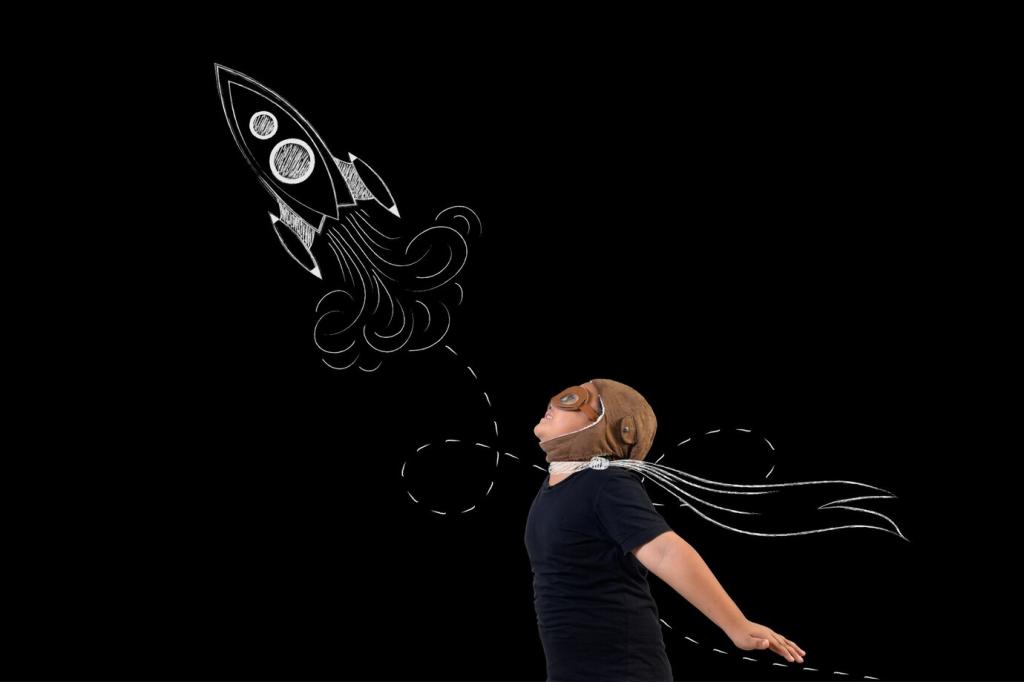Remote Work Productivity Hacks
Discover the best strategies to maximize your productivity while working remotely. Whether you’re a seasoned remote professional or just getting started, these comprehensive insights will empower you to work efficiently, maintain focus, and achieve your goals without being in a traditional office environment. Explore essential approaches for streamlining your workflow, optimizing your workspace, and staying motivated in the digital world.

Designing Your Ideal Workspace
Distractions can significantly hamper productivity, particularly in home environments filled with various interruptions. Identify the primary sources of distraction in your workspace, such as television, household chores, or noisy environments, and develop strategies to limit their impact. Creating a visual boundary, whether with screens or by facing away from distractions, can help redirect focus on work-related activities. Communicate your working hours to housemates or family members to reduce interruptions, and leverage noise-canceling headphones or calming background music to maintain concentration. By actively minimizing disruptions, you pave the way for deep work and sustained productivity throughout the day.
Mastering Time Management
Establishing a Routine
Setting a daily routine helps create a sense of normalcy and structure, keeping you organized and accountable while working remotely. Begin each day at a consistent time, and plan out your work hours, breaks, meals, and end-of-day activities. This level of predictability not only reinforces work-life balance but also primes your brain for productive work sessions. Over time, routines become habit, reducing decision fatigue and improving your overall efficiency.
Time Blocking Techniques
Time blocking is a powerful approach to managing tasks by allocating dedicated periods to focused activities. By assigning specific blocks to projects, meetings, and even breaks, you minimize the risk of multitasking and context switching. Use physical planners or digital calendars to visually map out your day, ensuring that important tasks receive the attention they deserve. Revisiting and refining your blocks each week can further enhance your ability to stay on target and accomplish goals.
Realistic Goal Setting
Setting realistic, achievable goals is crucial for remote workers seeking consistent progress. Break larger objectives into smaller milestones and celebrate the completion of each step. Keep goals specific, measurable, and time-bound to maintain motivation and track results. Adjust your expectations based on your workload and the potential for unforeseen interruptions, but always strive for steady advancement in your tasks. Well-defined goals bring clarity and direction, helping you move systematically toward success.

Creating Accountability Systems
Accountability systems keep you on track even when your supervisor isn’t physically present. Pair up with a colleague for regular check-ins, use productivity apps to track your accomplishments, or set up automated reminders for key deadlines. Knowing that someone else is aware of your commitments adds a layer of social pressure and motivation to meet your targets. Over time, external accountability transforms into intrinsic motivation, helping you build habits that naturally boost your output.
Minimizing Multitasking
While multitasking may seem efficient, it often leads to errors and reduced productivity. Focus on a single task at a time, giving it your full attention before moving on to the next. This mono-tasking approach allows you to enter a flow state, where ideas and solutions come more effortlessly. Resist the urge to check emails or instant messages while concentrating on important work, and regularly reassess your habits to ensure that multitasking doesn’t creep back in.
Finding Your Peak Productivity Hours
Everyone has certain times of day when they feel most alert and capable. Identify your personal peak productivity hours by tracking your output over several days or weeks. Once you’ve determined your high-energy periods, schedule your most challenging tasks during these windows. This keen self-awareness enables you to work smarter rather than harder, capitalizing on naturally occurring rhythms for maximum productivity.
Leveraging Technology Wisely
Streamlining Communication
Effective communication is essential for remote teams. Choose platforms that meet your collaboration needs, whether through instant messaging, video calls, or project management tools. Set clear expectations for response times and preferred channels to avoid misunderstandings. Use concise, organized messages and ensure regular updates are shared with your colleagues. Streamlined communication prevents unnecessary back-and-forth and ensures tasks continue moving forward without delays.
Automating Repetitive Tasks
Automation can liberate significant amounts of time from menial, repetitive work. Identify tasks like data entry, scheduling, or file organization that can be handled by automated systems or scripts. Employ tools such as calendar schedulers, email filters, and workflow automators to reduce the manual effort required. By delegating routine duties to reliable digital assistants, you free yourself up for more valuable, creative tasks that require human insight and judgment.
Secure Data Management
Handling sensitive information securely is critical, especially when working remotely. Utilize reliable cloud storage solutions with encryption capabilities, and implement regular backup schedules to avoid data loss. Protect your accounts with strong passwords and two-factor authentication, and stay informed about your company’s data policies. Secure management of your files and communication ensures ongoing productivity without the setback of data breaches or loss.
Mastering Virtual Collaboration
Effective Virtual Meetings
Good virtual meetings are structured and purposeful, keeping all participants engaged and on-topic. Prepare clear agendas, share materials beforehand, and designate roles such as timekeeper and note-taker. Encourage collaboration by inviting input from all team members and keeping discussions focused. After each meeting, distribute actionable summaries with next steps, ensuring every participant knows their responsibilities moving forward.
Collaborative Project Management
Robust project management enables remote teams to stay organized and aligned. Choose project management software that suits your workflow and ensure everyone understands how to use its features properly. Visual boards, task assignments, and progress trackers provide transparency and facilitate communication. Regularly review and adjust project plans to address shifting priorities or emerging challenges, keeping the entire team moving toward common objectives.
Building Team Rapport Remotely
Social bonds are just as important online as in the office. Foster team camaraderie through virtual coffee breaks, chat channels for informal conversation, and regular recognition of achievements. Encourage employees to share personal wins and challenges, creating an atmosphere of trust and support. Strong relationships lead to better collaboration, increased motivation, and a more enjoyable remote work experience for everyone.
Prioritizing Well-Being and Work-Life Balance

Setting Boundaries Between Work and Home
Clear boundaries protect both your work focus and personal time. Establish a designated workspace, if possible, and signal the start and end of your workday with routines such as a morning walk or evening shutdown ritual. Avoid checking emails after hours and communicate your schedule to household members. These boundaries help you mentally transition between roles and reduce the risk of burnout or resentment.

Taking Meaningful Breaks
Continuous screen time can reduce efficiency and increase fatigue. Incorporate scheduled breaks into your day, stepping away from your workspace to rest your eyes and clear your mind. Engage in activities that genuinely refresh you, such as stretching, meditating, or enjoying a healthy snack. Meaningful breaks enhance creativity and focus, enabling you to return to tasks with renewed energy and a clearer perspective.

Supporting Mental Health Remotely
Remote work can sometimes feel isolating, impacting mental wellness. Stay proactive about your mental health by checking in with friends or colleagues, engaging in hobbies, and seeking professional support if needed. Practice mindfulness techniques to manage stress and maintain emotional balance. Recognizing the signs of burnout early and taking care of your mental state creates a sustainable approach to productivity and job satisfaction.
Cultivating Continuous Learning
Online courses and training programs offer accessible ways to acquire new abilities or deepen your expertise. Identify reputable platforms that provide interactive materials, peer forums, and practical assignments in your area of interest. Dedicate regular time slots for learning and set clear goals for each session to ensure steady progress. Continuous upskilling not only increases productivity but also makes you more adaptable and valuable in the modern workforce.

